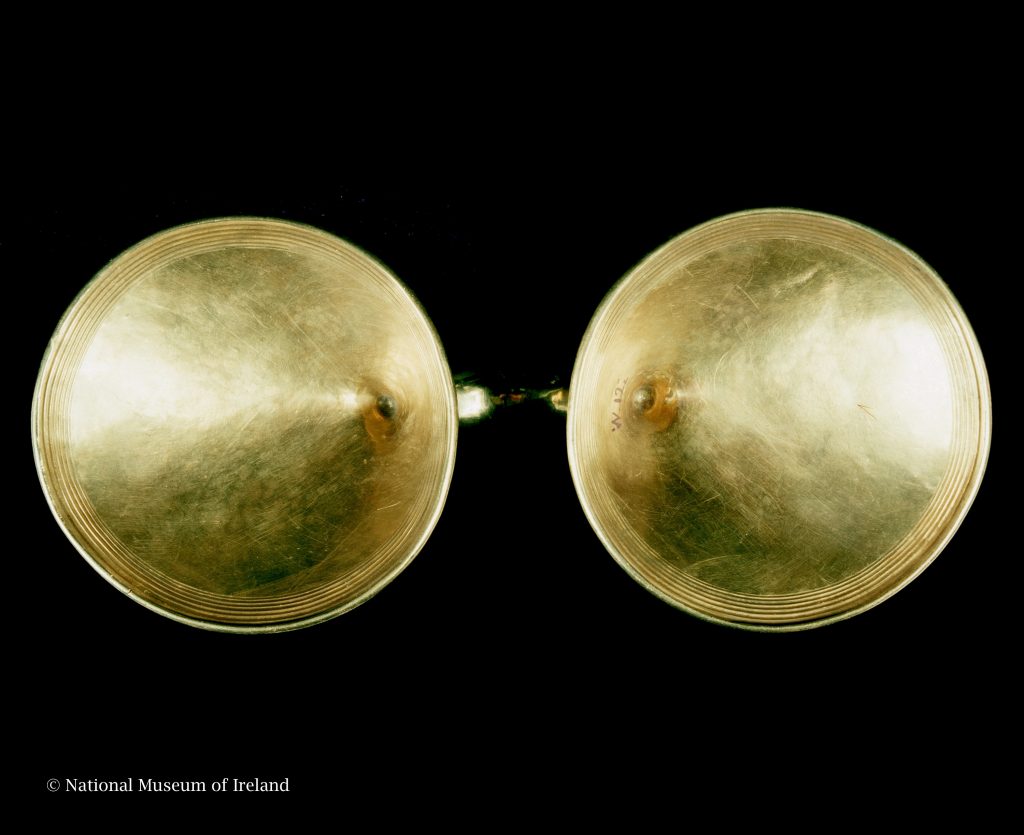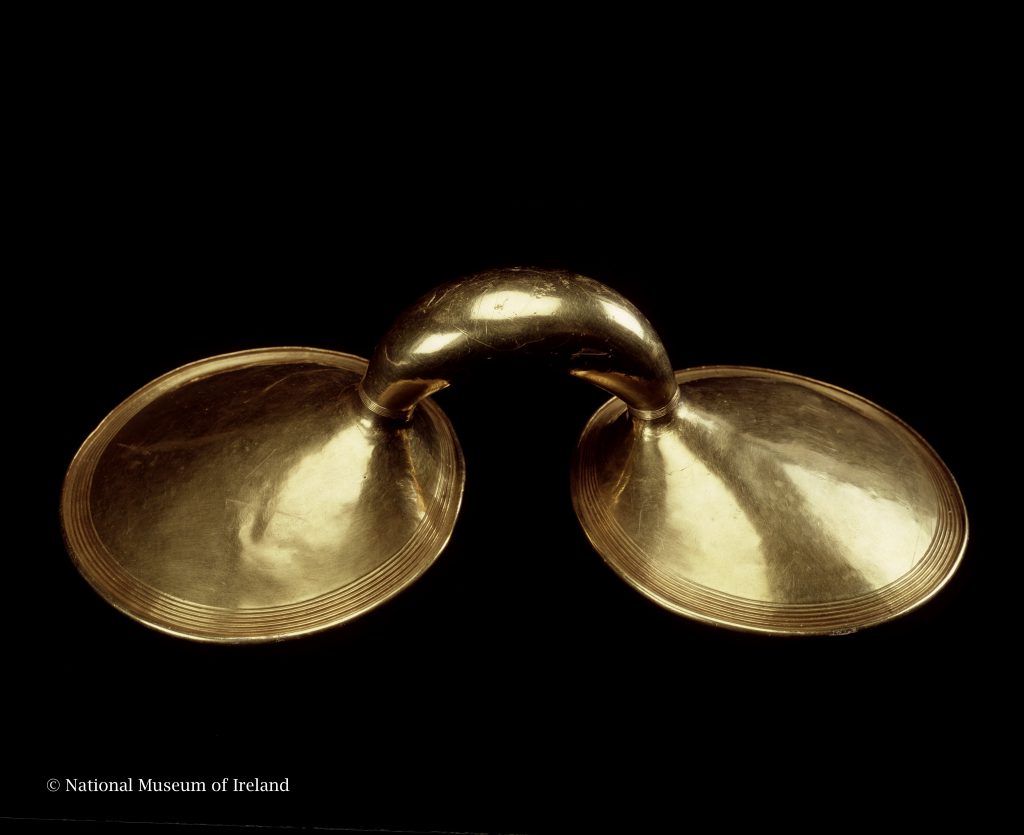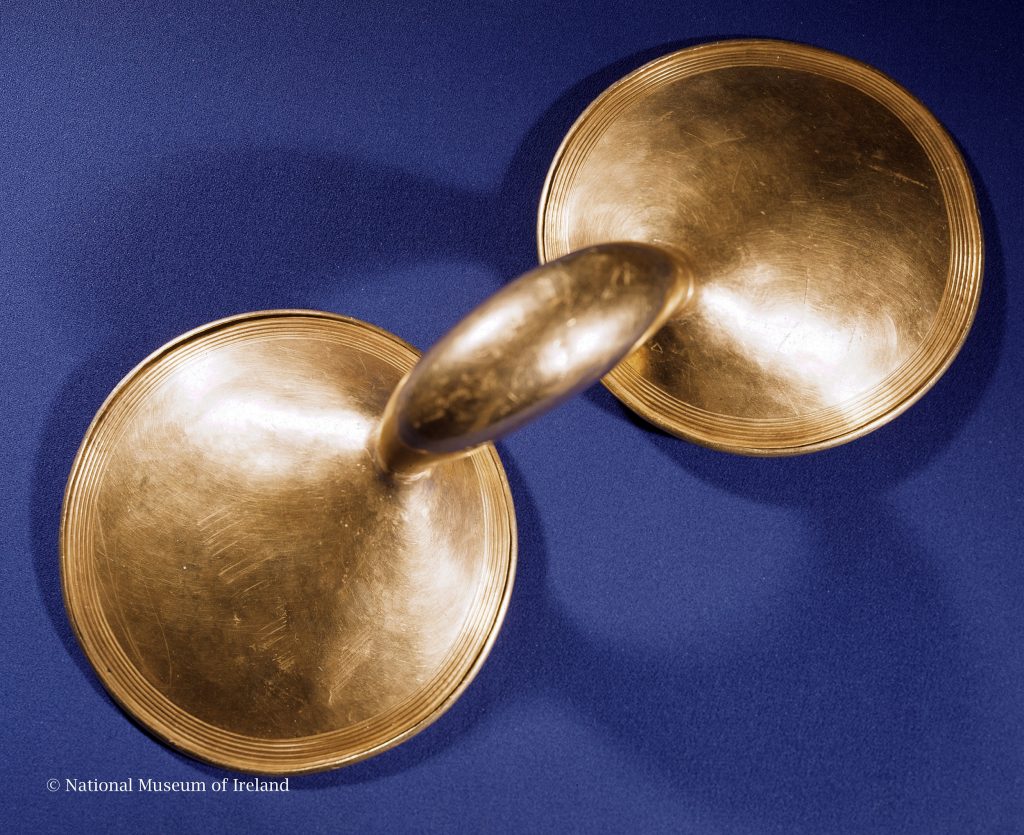Late Bronze Age Gold Fibula
This late Bronze Age Gold Dress Fastner (Fibula) dates from c.900-700 BC. It was found in Castle Kelly, Aghrane. It is described and catalogued by William R. Wilde M.D. M.R.I.A.
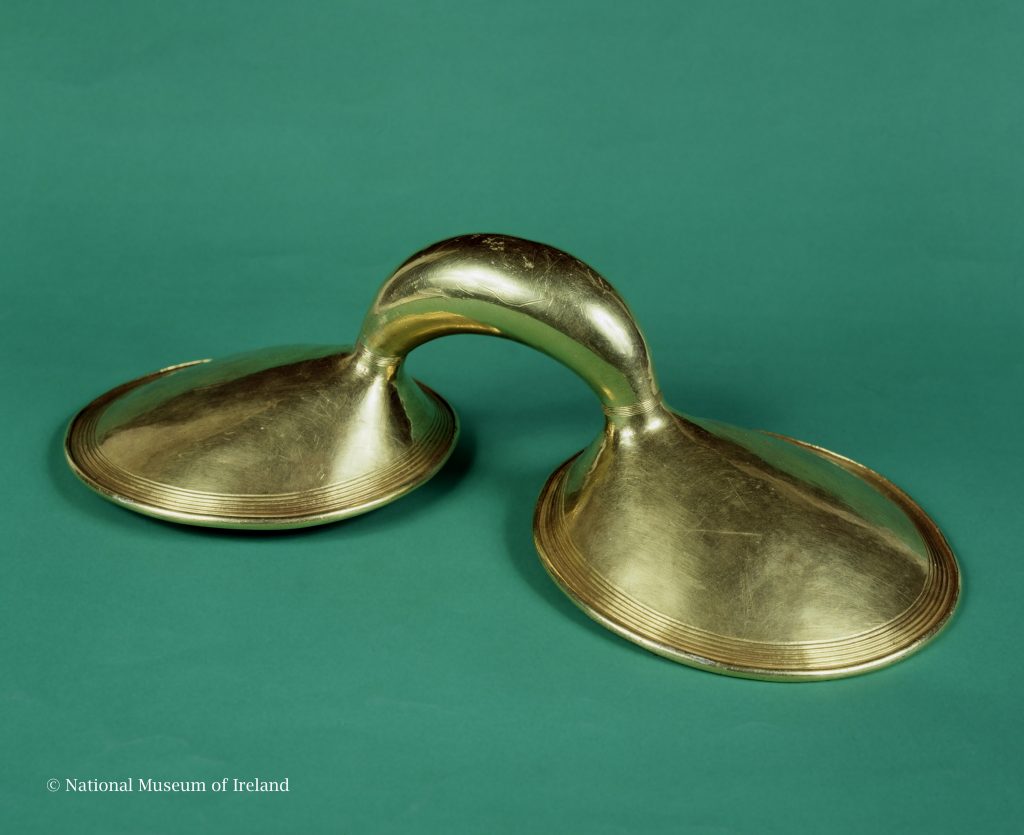
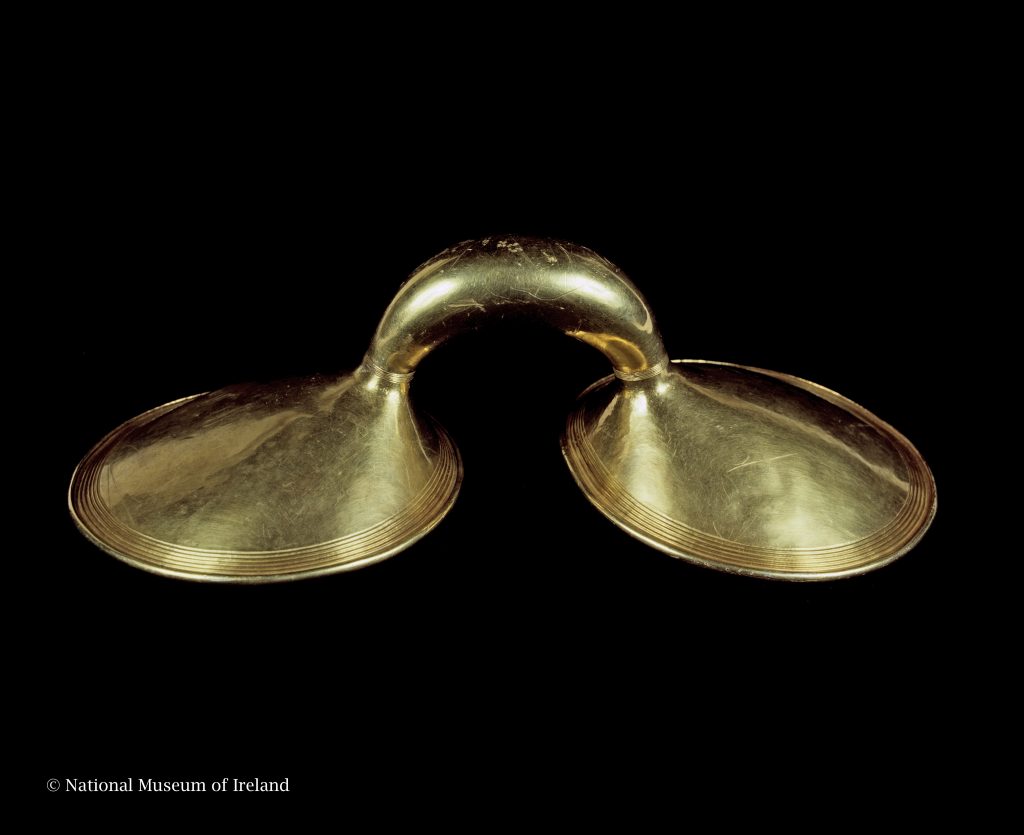
Wilde describes the artifact as follows: “The subjoined engraving, Figure 592, drawn one third size, from No.122, represents the largest example of the mammillary fibula which is known to have remained to the present day. It consists of two broad, cup shaped discs, each 5 inches in diameter, set 1 3/8 inch apart, and united by a staple like the handle of a drawer, as seen in the foregoing illustration. The entire article measures 11 inches in length, and weighs 16 oz. 17 dot, 4 gr. The internal surfaces of the cups bear marks of hammering all over them. The comparatively short, thick handle is hollow, and measures 4 1/8 inches in circumference at the broadest part. Placed on the flat, it stands 3 3/8 inches high. The edges of the cups are turned over, and decorated externally with deeply-grooved flutings; and a smaller, but similar form of ornament encircles each neck, or narrow portion of the handle. Each cup, which is 1 5/8 inches, to the point of the junction with the handles, which would appear to have been attached after they were made. This beautiful article was found in the year 1819, at Castlekelly, county Roscommon, five feet deep in gravel, below where fifteen spit of turf had been cut, and it was a long time believed to be brass. It was procured by D. H. Kelly, Esq., for the late Dean Dawson, and came in to the museum with that gentleman’s collection.”

